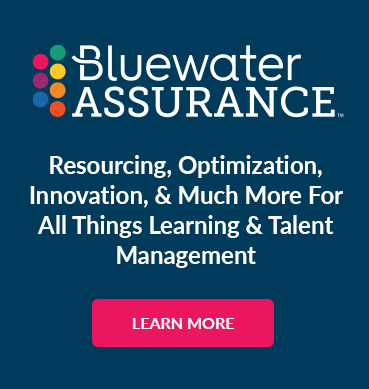How You Can Ensure Your Learning & Talent Success
by Michael Bond | December 9, 2019 02:25 AM | Shark Bites - SumTotal Edition

Sometimes HR executives ask me ‘how do I ensure the success of my learning and talent technology initiative?’ I reply, “you’re asking the wrong person”
Then they say: ‘well, hang on, aren't you a great leader in HR, talent, and learning technology? I’ve seen you at conferences, and workshops and checked you out on LinkedIn. How can you possibly NOT know?’
I reply, “Sure, to deliver a learning and talent technology program you need a clear vision, a terrific project leader, a great project team, an effective plan, and world-class technology. Those elements are all necessary. But alone, they will not guarantee success. Success is defined by your stakeholders.
Your success is judged by a diverse constituency of business leaders, end-users, admins, and externals. Typically, each group will have conflicting needs and expectations. Your stakeholders are always opinionated and sometimes unreasonable. They all want a good outcome – they just differ in their definition of ‘good’.
Here are some examples:
The IT team
They want a secure and stable technology solution that works to industry standards. They want it to be implemented on time within a busy IT schedule across the organization with minimal fuss and no panic. They also want HR technology that’s going to be around for the long term with simple and efficient maintenance and support.
The HR process owners
They want easy configuration of every possible process scenario in any combination for any subset of users. They want the ability to report across the entire organization whilst also delivering unique exceptions down to the level of the individual. They also want you to be a mind-reader and an infallible futurologist to ensure that today’s solution will deliver tomorrow’s best practices.
The HR operations team
They want a technology solution that’s easy to manage, impossible to break, and idiot-proof for the end-user. They want systems with a high degree of automation, and minimal manual intervention for common tasks (eg ‘new starters'). They want zero support tickets from end-users and rapid support ticket attention from the vendor’s own support team.
You get the idea. Everyone wants something special from your HR technology program. Even the technology vendor has a viewpoint and an agenda. They want revenue recognition and a referenceable client who will be a loyal repeat buyer and influencer. The unions and works councils want what’s best for the employee. Managers and executives want what’s best for the organization.
None of this is a surprise to you. As an HR technology leader, it’s your role and responsibility to concentrate these diverse needs and expectations into a single and coherent program. You do this by taking time to see the project from every other perspective than your own. And feel free to simply ask these stakeholders.
For each stakeholder group can you describe:
- What does GOOD look like?
- What are the specific activities that will drive good outcomes for your project?
- What are the measures that you can use to evaluate success in delivering good (or even great) results for that specific stakeholder group?
I’ve been involved in HR technology long enough to know that the *real* experts are there for you in your organization. Why not bring their perspective into the program and fuel your future success?
Interested in learning more about Learning & Talent Technology?
Feel free to reach out to us directly!
Search Our Blogs
Categories
- Ad Hoc (1)
- ADMIN (1)
- administration (1)
- AI (2)
- analytics (2)
- anxiety (1)
- Artificial intelligence (2)
- automation (1)
- BI (1)
- blog (1)
- Blueprint (1)
- center of excellence (10)
- Communication (2)
- COVID-19 (2)
- Culture (1)
- Custom Content (1)
- customer service (1)
- Data (1)
- Employee Engagement (1)
- Shark Bites - Cornerstone Edition (12)
- Shark Bites - SumTotal Edition (4)
- Shark Bites - Ultimate Edition (5)
- The Future of Learning (16)
- The Future of Talent Management (30)
- User Experience (2)
- UX (2)
- wellbeing (1)
Recent Posts
- Selecting Learning & Talent Technology - Part 5: Evaluating Vendors and Solutions
- Selecting Learning & Talent Technology - Part 4: Defining Technology Requirements
- Selecting Learning & Talent Technology - Part 3: Assessing and Aligning Talent Needs
- Selecting Learning & Talent Technology - Part 2: Understanding Business Drivers
- Selecting Learning & Talent Technology: A Strategic Approach to Success


